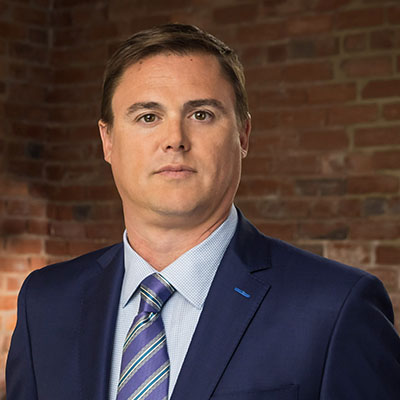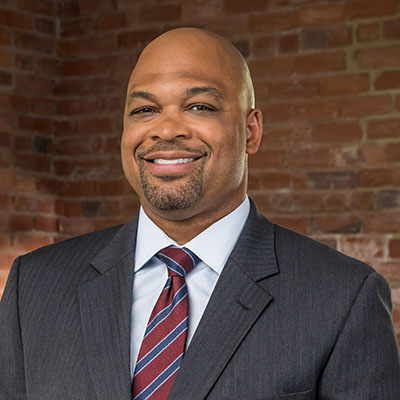My goal in every personal injury case is to obtain full and fair compensation for my client(s). This includes their accident-related medical expenses, bodily injuries, pain, suffering, inconvenience, lost wages, and everything in between. I begin working toward this objective from the very first day I meet with someone who has been injured through no fault of their own, and I continue to work towards this goal until the case is ultimately resolved.
I believe that the details of my client’s life, both before and after their injury, are essential in determining what full and fair compensation means to their particular case. Of course, I do collect the medical records and bills generated in the aftermath of the accident, but I also try to get as much information as possible about who my client is and what they do. Information about family, hobbies, employment and community involvement allows me present a picture of my client’s life before and after the accident to an insurance adjuster, a defense attorney, a judge or a jury.
I know firsthand that living through the effects of a motor vehicle accident can alter virtually every aspect of someone’s life. In my mind, full and fair compensation has to include more than just medical bills: all the sleepless nights, missed opportunities to play with children, negative performance reviews in the workplace and the litany of other intangible consequences that someone suffering from a traumatic injury is forced to endure along their road to recovery.
Unfortunately, I find that when a claim is first submitted to an insurance company, valuable details like these often get lost in the paperwork. Adjusters tend to focus on the amounts charged by physical therapy providers, the costs of diagnostic tests performed in emergency rooms and the number of hospital visits that constitute the medical expense portion of the claim. They concurrently fail to focus on the person who was injured and the impact of the accident on that person’s life. In my mind, the ‘industry-standard’ calculus often ignores what should be the most valuable aspects of the claim.
When this happens, the only option is to file a lawsuit and bring the case to a judge or a jury to determine its ultimate value. I understand that taking a personal injury case to trial can be intimidating. Accepting a settlement – even if it is less that what was originally sought – offers certainty, immediacy and finality – all of which are enticingly appealing for someone who has been suffering for months, or even years in the aftermath of a collision. Many of my clients who have never seen the inside of a courtroom before are understandably scared to take the risk of going to trial.
One of the biggest problems is that most of my clients have only seen a trial on a television show or in a movie. They watch courtroom dramas filled with surprise witnesses, chastising judges, runaway juries and flamboyant attorneys, and believe that this is what will happen if they elect to take their case to court. I do my best to assure them that the reality of a trial couldn’t be farther from these fictional depictions.
The courtroom is, first and foremost, a professional environment. Lawyers on both sides, along with the presiding judge, understand that the rules of professional conduct require honesty, integrity and decency at all times. No one will single the other out. In Circuit Court, the pretrial discovery process includes interrogatories, depositions, expert designations and requests for admissions, thus ensuring that the evidence introduced at trial is made known well before the doors to the courtroom open and the trial begins. After diligent, pre-trial preparation, the chance of a game changing surprise is exceeding low.
While there is certainly room for emotion – especially when describing the collision or the resulting injuries – the vast majority of a trial is very clinical. Medical experts testify about the area of the body that was injured and whether or not that injury is related to the accident, lay witnesses talk about the nature of the collision and what they observed, and lawyers make legal arguments about the admissibility of evidence. The process of the trial itself is very straightforward.
The benefit of taking a case to trial is that the injured person gets an opportunity to explain all of the details about their life. Who they are will lay the foundation for their damages. At a trial, we are able to present a comprehensive before and after picture that explains the pain, suffering and inconvenience associate with the claim. In court, the case is all about the person and not just about the paperwork.
Many times, and for a variety of reasons, personal injury claims resolve in full and fair settlements that avoid any need to go to court. In other cases, however, overcoming the initial fear of the courtroom is the only way to shift the focus to the details of a traumatic injury and its resulting effect on an injured person’s life. For people injured through no fault of their own, the right to take their case to trial is often the most valuable tool we have in our effort to obtain full and fair compensation.
If you are someone you know has been injured through no fault of their own, call the experienced trial attorneys of Allen and Allen for a free consultation.
About the Author: Chris Toepp is a Fredericksburg, VA personal injury lawyer dedicated to helping people who have been injured by the negligence of others. He is experienced in handling personal injury cases involving car crashes. Chris works in the Fredericksburg, Virginia office of Allen & Allen and serves clients across Northern Virginia and Central Virginia.



